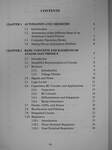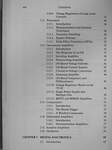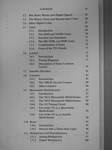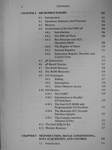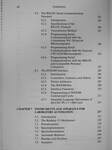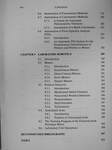1.035.045
kiadvánnyal nyújtjuk Magyarország legnagyobb antikvár könyv-kínálatát

VISSZA
A TETEJÉRE
JAVASLATOKÉszre-
vételek
An Introduction to Laboratory Automation
| Kiadó: | John Wiley & Sons, Inc. |
|---|---|
| Kiadás helye: | New York |
| Kiadás éve: | |
| Kötés típusa: | Fűzött keménykötés |
| Oldalszám: | 321 oldal |
| Sorozatcím: | Chemical Analysis |
| Kötetszám: | 110 |
| Nyelv: | Angol |
| Méret: | 24 cm x 16 cm |
| ISBN: | 0-471-61818-7 |
| Megjegyzés: | Fekete-fehér ábrákkal. |
naponta értesítjük a beérkező friss
kiadványokról
naponta értesítjük a beérkező friss
kiadványokról
Fülszöveg
A fully automated lab can perform miracles of elucidation—from taking objective measurements to generating massive amounts of data in a short time to drawing conclusions using multi-variant statistical methods. In this technically enhanced setting, a chemist can now conduct new types of experiments, ones that require the assimilation of large amounts of data in a short time and others that require the control of a large number of parameters simultaneously or take a long time to complete. Automating a laboratory is surprisingly inexpensive—and given the basic electronics and computer know-how—relatively simple. With this text, written by two chemists who have successfully automated their own labs, you'll be able to fully automate your laboratory, building and programming your own devices and automatic systems, using their measured, step-by-step approach. You'll learn:
• The basic concepts of analog and digital electronics, enabling you to select components of appropriate quality... Tovább
Fülszöveg
A fully automated lab can perform miracles of elucidation—from taking objective measurements to generating massive amounts of data in a short time to drawing conclusions using multi-variant statistical methods. In this technically enhanced setting, a chemist can now conduct new types of experiments, ones that require the assimilation of large amounts of data in a short time and others that require the control of a large number of parameters simultaneously or take a long time to complete. Automating a laboratory is surprisingly inexpensive—and given the basic electronics and computer know-how—relatively simple. With this text, written by two chemists who have successfully automated their own labs, you'll be able to fully automate your laboratory, building and programming your own devices and automatic systems, using their measured, step-by-step approach. You'll learn:
• The basic concepts of analog and digital electronics, enabling you to select components of appropriate quality and construct simple circuits
• The dynamics of the simplest electronic elements—resistors, capacitors and RC circuits—and their applications, as well as diodes, rectifiers, filters, regulators, and more
• The basic vocabulary of bit, byte, word and digital signal, gates, latches, counters, and multivibrators
• The basic parts of a microprocessor— the arithmetic logic unit, the internal registers, and the control units—as well as input/output techniques
•Analog-to-digital and digital-to-ana-log conversion techniques
• The way interface cards can be programmed in interpreted and compiled BASIC, complete with program examples
•The most popular communication protocols for intercommunicating computers, instruments, and other
devices
• The laboratory instruments and apparatus with the necessary interfaces useful in building up an automated
system
(continued on back flap) Vissza
Témakörök
- Idegennyelv > Idegennyelvű könyvek > Angol > Műszaki
- Idegennyelv > Idegennyelvű könyvek > Angol > Természettudományok > Kémia
- Műszaki > Informatika > Számítógép > Alkalmazása
- Műszaki > Technika > Automatizálás > Egyéb
- Természettudomány > Kémia > Általános kémia > Kémiai analízis
- Természettudomány > Kémia > Kísérletek, gyakorlatok > Mérések, eszközök
- Természettudomány > Kémia > Idegennyelvű
- Műszaki > Idegennyelv > Angol
Megvásárolható példányok
Nincs megvásárolható példány
A könyv összes megrendelhető példánya elfogyott. Ha kívánja, előjegyezheti a könyvet, és amint a könyv egy újabb példánya elérhető lesz, értesítjük.








